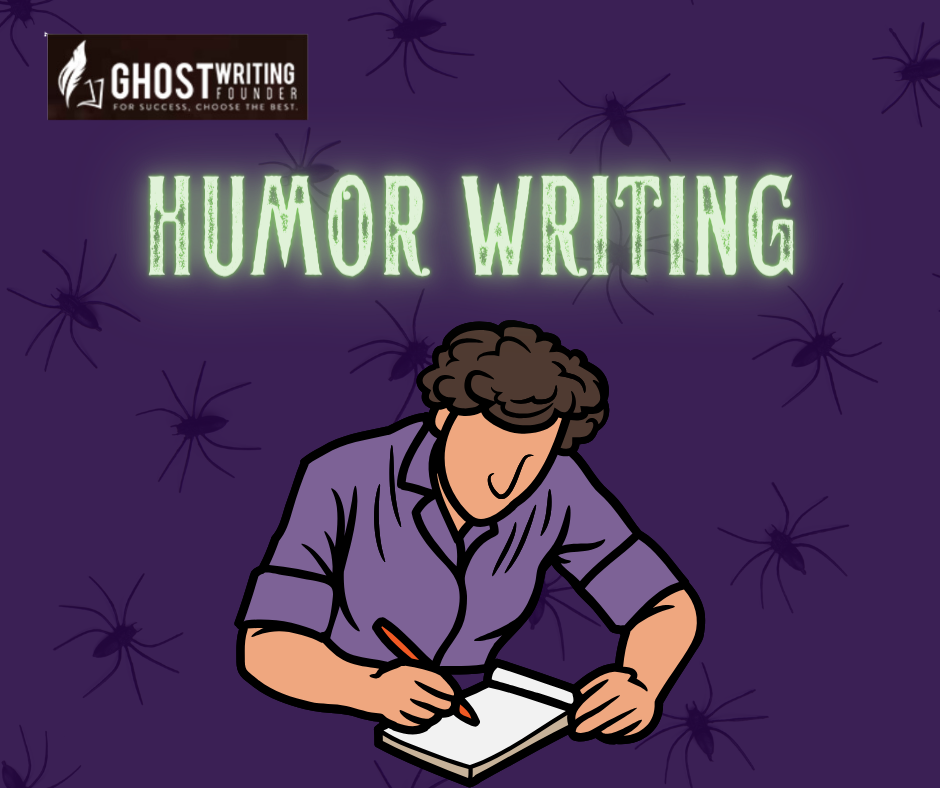
book marketing
Humor is among the most popular writing genres. It can grab people’s attention, make your writing memorable, and even make serious topics easier to talk about. But using humor writing isn’t easy – you need to be skilled and understand how it works. In this article, we will explore the best ways to use humor in your writing to entertain and connect with your readers.
Why Use Humor Writing in Content?
Humor writing can be used to:
- Break up the dullness of dry facts or long passages of text. A well-placed joke or quip can make even the most boring text seem exciting and engaging.
- Make the reader feel more connected with your content. Humor can help you establish a relationship with your audience and create an emotional bond with them. It also helps you connect with people who may have different values and beliefs than your own.
- Showcase your personality and make yourself memorable as an author or blogger.
Types of Humor Writing
There are many different kinds of Humor Writing:
Verbal Humor:
Verbal humor involves wordplay, puns, and clever language use. It relies on the manipulation of language to create humorous effects. Verbal humor can be effective in written content, but it requires a strong command of language. One way to incorporate verbal humor into your writing is to work with a professional writer from Ghostwriting Founder.
Situational Humor:
Situational humor arises from the circumstances or context in which a story or situation unfolds. It often involves unexpected and amusing events. Incorporating situational humor into your writing can make your content more engaging.
Slapstick comedy:
This type of humor writing involves physical gags and pratfalls, such as a character tripping over something or falling into something.
Sarcasm:
This kind of humor involves saying the opposite of what you mean, usually to make fun of someone else or something.
Parody:
Parody is when you write a story that mimics the style and tone of another work but with different characters and plotlines. You might also see this referred to as satire (satire goes further than parody).
Effective ways to use humor in your writing
Using humor effectively in your writing can enhance engagement and make your content more enjoyable to read. Let’s discuss the effective ways to use humor in writing.
Understand Your Audience:
The first step to using humor in your writing is knowing who will read it. What’s funny to one person may not be funny to another, so it’s essential to understand what people like and dislike when it comes to humor. When you know this, it’s easier to tailor your message so that they’ll find it engaging and entertaining — or at least not offensive.
Choose Your Tone:
The tone of your writing depends on who you’re trying to reach and what kind of relationship you want with that audience. For example, if you’re writing a blog post about how much you love cats, then an informal tone might work best because it matches the conversational style of blogs. On the other hand, if you’re trying to convince someone that they should hire you as their lawyer, then a formal tone might be more appropriate because it shows professionalism and seriousness about business matters.
Use Wordplay:
You can use wordplay to make your writing more exciting and captivating. Wordplay is a form of humor that involves cleverly using words or phrases to mean something other than their literal meaning.
For example:
“I always wanted a pet rock, but my mom wouldn’t let me.”
This joke pokes fun at the famous “pet rock” fad of the 1970s. The speaker uses the word “rock” in place of “pet,” which makes it seem as if she wants an actual rock for her pet instead of a real animal. This joke is funny because it makes the reader think twice about what they just read.
Humor can also be used when you break away from your regular writing style and write in another style — like poetry or rhyme scheme — for a short period before reverting back to ordinary prose.
Another way to use humor is through exaggeration (making things bigger or smaller than life) and understatement (making things seem smaller than they really are).
Employ Satire:
Satire is one of the most effective ways to use humor in writing. If a writer can make a point or poke fun at something by using satire, then they have found a way to inject some humor into their writing.
Satire is a literary device that uses irony, sarcasm, and exaggeration to show how ridiculous things are. It is meant to ridicule an idea or person, often by pointing out its flaws and shortcomings. For example, if you wanted to write about why you think it is silly for people to go on diets all the time, you could use satire as your primary way of sharing your opinions with others. You could write about how some people go on diets so that they can lose weight quickly and efficiently so that they can look good in their clothes again.
If someone wrote about this topic in an angry tone or with sarcasm, it would not be as effective as if they used satire because they would not be giving their opinion but instead just making fun of those who go on diets all the time by making them seem like fools who do not know what they are doing with their lives.
Be Consistent:
While using humor in your writing, make sure you’re consistent with it. Using jokes and puns here and there can be fun — but if they’re out of place, they just come across as awkward attempts at humor that don’t work very well at all. If you want to use them, do so consistently throughout your entire piece so that readers know what to expect when they read something funny from you.
Use Clean Humor:
This kind of humor writing goes along with being consistent — but there’s a difference between clean comedy (which is something like an old joke) and dirty comedy (which is something like toilet humor). Make sure that if you’re using jokes or puns in your writing, they fit into the overall tone of the piece and aren’t just there for the sake of making someone laugh at any cost.
Essential Elements and Detailed Insights
| Aspect | Details | Examples/Techniques |
|---|---|---|
| Purpose of Humor | – Breaks up dullness – Connects with readers – Showcases personality |
– Jokes in dry topics – Relatable humor |
| Types of Humor | – Verbal – Situational – Slapstick – Sarcasm – Parody |
– Wordplay, puns – Unexpected events – Physical gags – Opposite meanings – Mimicking styles |
| Understanding Audience | – Know reader preferences – Tailor humor accordingly |
– Age-specific jokes – Cultural references |
| Choosing Tone | – Depends on target audience and purpose | – Informal for blogs – Formal for professional content |
| Using Wordplay | – Engages and captivates readers | – Double meanings – Clever phrasing |
| Employing Satire | – Uses irony and exaggeration to critique | – Ridiculing societal norms – Exaggerating for effect |
| Consistency and Clean Humor | – Maintain humor style – Use appropriate humor |
– Regular humorous content – Avoiding offensive jokes |
Conclusion
Incorporating humor writing in blog posts or any content can be a game-changer. It enables you to connect with your audience, make your content more memorable, and engage readers on a deeper level. However, it’s essential to use humor strategically, keeping your audience’s preferences and context in mind. By experimenting with different techniques, you can become a proficient humor writer and elevate the impact of your content.









Leave a Reply